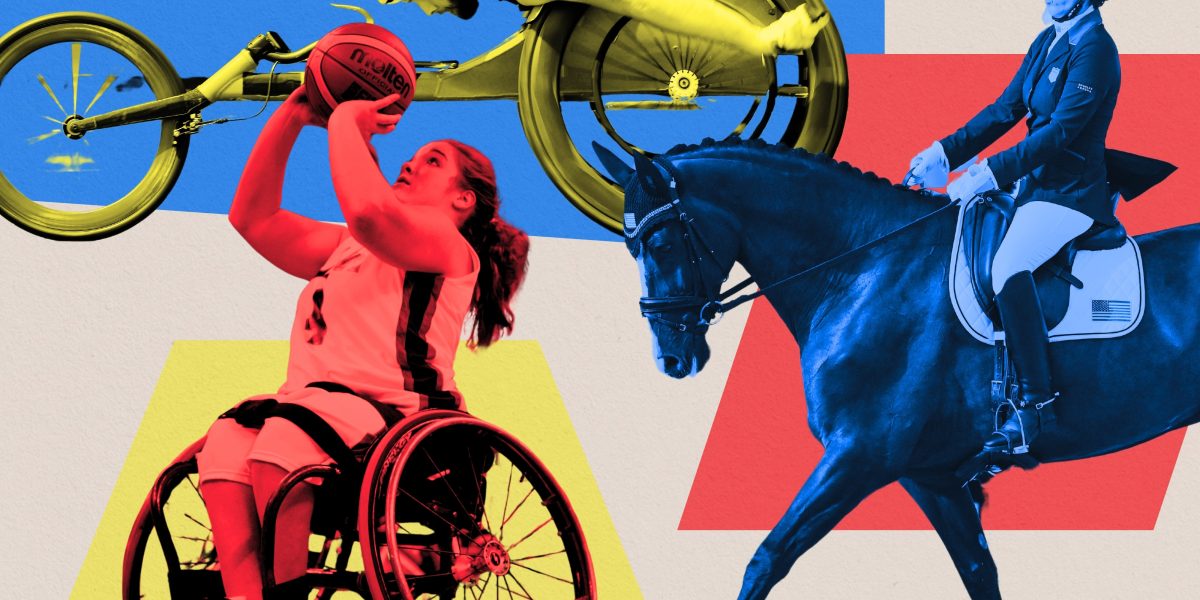Trunnell owns an embroidery business called Roxifi Embroidery that appeals mostly to the horse community and provides her with an income. She makes blankets, saddle pads, ice boots, standing wraps, as well as shirts and sweaters, “basically anything I can hoop and get a needle through,” Trunnell says, because “if you want to play in the sandbox with the big boys, then you’re going to have to pay.”
Roxanne Trunnell competing in a para-dressage event.
Courtesy of Lindsay McCall
Carly Weilminster, senior director of sport communications and social media for the US Equestrian Federation (USEF), tells SELF that equestrian doesn’t have a national team, so athletes aren’t paid stipends, but they can receive funding and grants “based on performance and experience” to offset costs associated with international travel and competitions. The same is true of Paralympians in other sports, who can apply for a variety of grants and funding that the USOPC and third-party organizations offer. But some of those who spoke to SELF say these opportunities are limited, not advertised well, and still aren’t enough to cover their expenses. (The USOPC, unlike other national Olympic and Paralympic committees, doesn’t receive government financial support and is funded entirely by donations from fans and sponsorships from commercial partners.)
Travel-related mishaps aren’t easy to recover from.
Getting to competitions as a disabled athlete also poses pretty big financial risks. Brim says that nearly every time she travels with a team, at least one person’s chair is lost or damaged, despite offering airport staff detailed instructions about how to handle the equipment. “It’s a huge bummer, and we want to see change around it because it’s just so uncalled for.”
Brian Siemann, 34, a three-time track-and-field Paralympian, agrees. He says that airport staff need better training on how to transport and store wheelchairs because they can take thousands of dollars and several months to replace. “A mobility device should be in a completely different category of concern than someone’s suitcase,” he tells SELF. When Siemann travels via plane, he can box up his roughly $15,000 racing chair pretty well to avoid damage, but he can’t do that with his everyday chair because he needs it as soon as he gets off a plane. (Wheelchairs can be taken on planes if they aren’t motorized and can fit in overhead bins or other designated areas inside the cabin, but if they don’t fit they are placed in the cargo portion of the plane with checked luggage.)
Siemann’s everyday chair costs about $7,000 because it’s customized to his body, but his insurance considers that “a luxury,” meaning it’s close to impossible to get it covered. So when an airport in Miami lost it and offered $100 as an apology, it was a “jarring experience,” to say the least, he says. “There’s always a higher than likely chance that some part of your mobility device is going to be lost or damaged, which then completely impairs and restricts your ability to get around safely,” Siemann says. “And it’s not a quick fix for anyone,” particularly when sports equipment is involved.
Healthcare can get tricky and expensive for athletes with disabilities.
It’s also more challenging—physically, yes, but also financially—for a lot of Paralympic athletes to keep themselves healthy compared to their Olympic peers. Some disabilities often require regular medical attention and can make athletes more vulnerable to illnesses or stress because of the traumatic events or underlying conditions that cause them—all of which can get expensive, especially in countries like the US that don’t have universal health care.
